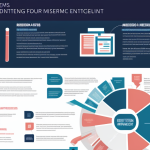The World Health Organization (WHO) is a specialized agency of the United Nations responsible for promoting health, keeping the world safe, and serving the vulnerable. It was established on April 7, 1948, and since then, it has been working towards its goal of providing better health outcomes for all people. However, the main activity of WHO is often misunderstood by many. In this article, we will provide a comprehensive overview of the main activity of WHO and explore its impact on global health. So, let’s dive in to understand the main activity of WHO and its significance in today’s world.
The World Health Organization (WHO) and Its Role in Global Health
WHO’s Origins and Purpose
Establishment after World War II
In 1948, the World Health Organization (WHO) was established as a specialized agency of the United Nations (UN) with the primary goal of promoting health, keeping the world safe, and serving the vulnerable. The organization was established following World War II with the recognition that health was an essential component of international security and development. The WHO’s establishment marked a significant milestone in global health as it brought together countries from different continents to work together towards a common goal of improving the health of the world’s population.
Declaration of Principles
The WHO was founded on the principles of the constitution, which was adopted by the International Health Conference in 1946. The constitution set out the fundamental principles that guided the organization’s work, including the principle of universal health, which recognized that all individuals have a right to enjoy the highest attainable standard of health. The constitution also emphasized the importance of health as a state of complete physical, mental, and social well-being and not merely the absence of disease or infirmity.
Goals and Functions
The WHO’s goals and functions are outlined in its constitution. The organization’s main goal is to promote health, keep the world safe, and serve the vulnerable. To achieve this goal, the WHO has several functions, including providing leadership on global health matters, shaping the global health agenda, setting norms and standards for health, and articulating evidence-based policy options. The WHO also works to improve access to essential health services and promote the health of vulnerable populations, including women, children, and marginalized communities. The organization’s functions also include conducting research, providing technical support to countries, and advocating for the health of all people.
WHO’s Structure and Governance
Member States
The World Health Organization (WHO) is comprised of 194 Member States, which include almost every country in the world. These Member States are represented by their respective governments and work together to shape the organization’s policies and decisions. The Member States also have a role in shaping the global health agenda and providing guidance on health matters.
Regional Offices
The WHO is organized into six regional offices, which are located in different parts of the world. These regional offices are responsible for implementing the organization’s programs and providing technical assistance to Member States in their respective regions. The regional offices also work to strengthen collaboration between Member States and other partners in the region.
Programme Budget and Assessment
The WHO’s budget is primarily funded by its Member States, through assessed contributions. The organization also receives voluntary contributions from other donors, including private foundations, governments, and individuals. The budget is used to support the organization’s programs and activities, including disease control, health promotion, and research.
The WHO is also subject to assessment by its Member States, through the process of the World Health Assembly. The World Health Assembly is the supreme governing body of the WHO and is comprised of representatives from all Member States. The Assembly meets annually to review the organization’s work and to provide guidance on its future direction. The assessment process helps to ensure that the WHO is accountable to its Member States and that its activities are aligned with the global health priorities of its Member States.
The Core Activity of WHO: Disease Control and Prevention
Monitoring and Assessing Health Trends
Monitoring and assessing health trends is a crucial component of the World Health Organization’s (WHO) disease control and prevention efforts. This involves gathering and analyzing data on various health indicators to identify patterns, trends, and emerging health issues. The WHO employs a range of tools and strategies to monitor and assess health trends, including the Global Health Observatory, health data and metrics, and health system profiles.
Global Health Observatory
The Global Health Observatory (GHO) is a comprehensive database maintained by the WHO that provides access to data and statistics on a wide range of health indicators. The GHO collects and analyzes data from a variety of sources, including national governments, international organizations, and academic institutions. This data is used to track progress towards the Sustainable Development Goals (SDGs), assess the effectiveness of health policies and interventions, and identify areas where additional resources and efforts are needed.
Health Data and Metrics
The WHO also relies on health data and metrics to monitor and assess health trends. This includes data on mortality rates, morbidity rates, disease prevalence, and health system performance. The WHO works with national governments and other partners to collect and analyze this data, and uses it to inform policy decisions and guide the development of health programs and interventions.
Health System Profiles
Finally, the WHO produces health system profiles to provide a comprehensive overview of the health systems in countries around the world. These profiles include information on the structure and organization of health systems, health financing mechanisms, health workforce, and health service delivery. The WHO uses these profiles to identify strengths and weaknesses in health systems, and to provide guidance and support to countries as they work to improve the quality and accessibility of health services.
Overall, monitoring and assessing health trends is a critical component of the WHO’s disease control and prevention efforts. By collecting and analyzing data on a wide range of health indicators, the WHO is able to identify emerging health issues, track progress towards the SDGs, and inform policy decisions and the development of health programs and interventions.
Providing Technical Assistance and Guidance
WHO’s core activity revolves around controlling and preventing diseases worldwide. A significant aspect of this mission is providing technical assistance and guidance to member states, regions, and partners. This support helps them in implementing effective health policies, programs, and services. The following are the key components of WHO’s technical assistance and guidance:
Disease-Specific Programs
WHO focuses on specific diseases that pose significant public health challenges globally. Some of these diseases include:
- Malaria
- Tuberculosis (TB)
- HIV/AIDS
- Ebola
- Polio
- Influenza
WHO collaborates with countries, partners, and networks to develop and implement strategies to prevent, detect, and respond to these diseases. The organization also supports research and development of new tools and interventions to control and eliminate these diseases.
Public Health Capacity Building
Building public health capacity is crucial for WHO’s technical assistance and guidance. This involves supporting countries in strengthening their health systems, including health workforce, logistics, and supply chain management. WHO provides training, education, and mentoring to health professionals, managers, and policymakers. The organization also helps countries in developing and implementing health policies and strategies that are tailored to their needs and contexts.
Policy and Normative Support
WHO plays a vital role in setting global health standards and guidelines. The organization develops evidence-based norms and policies that guide countries in their health efforts. This includes setting targets for disease control and prevention, promoting health equity, and ensuring the safety and efficacy of vaccines and other health technologies. WHO also provides guidance on health system strengthening, health financing, and health governance. The organization works with member states, partners, and stakeholders to promote the adoption and implementation of these policies and norms.
In summary, WHO’s technical assistance and guidance are critical components of its disease control and prevention mission. By providing disease-specific programs, public health capacity building, and policy and normative support, WHO helps countries in their efforts to promote health, keep the world safe, and serve the vulnerable.
Addressing Global Health Challenges
Neglected Tropical Diseases
Neglected tropical diseases (NTDs) are a group of diseases that disproportionately affect low-income populations in tropical and subtropical regions. The World Health Organization (WHO) has identified 17 NTDs that are primarily spread by insects, animals, or contaminated water. These diseases include malaria, dengue fever, river blindness, and lymphatic filariasis, among others. WHO’s main activity in addressing NTDs is to support countries in implementing evidence-based control and elimination strategies, including mass drug administration, vector control, and disease surveillance. WHO also works to increase awareness and understanding of NTDs among the general public and to advocate for increased funding and resources for NTD research and control.
Communicable Diseases
Communicable diseases are diseases that can be transmitted from person to person or through contaminated food, water, or air. Examples of communicable diseases include tuberculosis, HIV/AIDS, and influenza. WHO’s main activity in addressing communicable diseases is to provide technical and financial support to countries to strengthen their disease surveillance, laboratory and clinical diagnostic services, and treatment and care programs. WHO also works to promote the development and dissemination of effective vaccines and other prevention and control measures.
Noncommunicable Diseases
Noncommunicable diseases (NCDs) are diseases that are not transmitted from person to person, such as cancer, diabetes, and cardiovascular disease. NCDs are responsible for a significant proportion of global morbidity and mortality, and their incidence is increasing worldwide. WHO’s main activity in addressing NCDs is to promote the adoption and implementation of evidence-based NCD prevention and control strategies, including tobacco control, healthy diet and physical activity promotion, and cancer and chronic disease screening and treatment. WHO also works to increase awareness and understanding of NCDs among the general public and to advocate for increased funding and resources for NCD research and control.
Health Systems Strengthening
Strengthening health systems is a critical component of WHO’s disease control and prevention activities. A strong health system is essential for the effective detection, diagnosis, treatment, and control of diseases. WHO’s main activity in health systems strengthening is to provide technical and financial support to countries to improve the organization, financing, and delivery of health services. This includes supporting the development of health policies and strategies, strengthening health information systems, and promoting the use of evidence-based practices and technologies. WHO also works to promote the development of human resources for health and to support the training and retention of health workers.
WHO’s Collaborative Efforts and Partnerships
Partnerships for Better Health
WHO Collaborating Centers
WHO Collaborating Centers are institutions that partner with the World Health Organization (WHO) to advance global health goals. These centers are located in various countries around the world and focus on specific areas of health, such as disease control, research, and policy development. By collaborating with these centers, the WHO is able to expand its reach and impact, leveraging the expertise and resources of these institutions to address public health challenges.
Alliance for Health Policy and Systems Research
The Alliance for Health Policy and Systems Research is a global network of researchers, policymakers, and stakeholders who work together to improve health systems and policy. The Alliance is supported by the WHO and aims to build capacity in health policy and systems research, promote knowledge sharing, and support the development of evidence-based policies and programs. Through its work, the Alliance seeks to strengthen health systems and improve health outcomes for people around the world.
Global Health Clusters
Global Health Clusters are networks of organizations and institutions that work together to address specific health challenges. These clusters bring together experts from different fields, including healthcare, research, and policy, to collaborate on initiatives that improve global health. The WHO plays a key role in facilitating these clusters, providing technical support and coordination to ensure that efforts are aligned with global health priorities and that resources are used effectively. By working through these clusters, the WHO is able to leverage the collective expertise and resources of its partners to achieve greater impact in addressing public health challenges.
Engaging with Member States and Stakeholders
Country Support and Cooperation
WHO collaborates closely with member states to improve global health outcomes. The organization provides technical support and guidance to countries, assisting them in strengthening their health systems and addressing health challenges. This support includes capacity building, knowledge sharing, and the development of evidence-based policies and programs.
External Relations and Partnerships
WHO maintains a network of external partnerships with other international organizations, NGOs, academic institutions, and the private sector. These partnerships help to enhance the organization’s effectiveness in addressing global health issues, leveraging the expertise and resources of various stakeholders. WHO works closely with partners to develop joint initiatives, promote collaboration, and foster knowledge exchange.
Engaging Civil Society and Foundations
WHO actively engages with civil society organizations and foundations to enhance its outreach and impact. By collaborating with these organizations, WHO can tap into their expertise, resources, and networks to advance its goals and objectives. This engagement helps to promote greater awareness of global health issues, mobilize support, and foster innovation in addressing health challenges.
Addressing Health Inequalities and Health Promotion
Health Equity and Social Determinants
The World Health Organization (WHO) recognizes that health inequalities are a major concern worldwide. These disparities often arise from social determinants, such as poverty, education, and access to resources. The organization is committed to addressing these issues and promoting health equity for all individuals, regardless of their socioeconomic status or background.
Promoting Healthier Lifestyles
In addition to addressing health inequalities, WHO also works to promote healthier lifestyles among individuals worldwide. This includes encouraging physical activity, healthy eating habits, and the reduction of tobacco and alcohol consumption. By promoting healthier lifestyles, WHO aims to reduce the burden of non-communicable diseases, such as diabetes, heart disease, and cancer.
Health in All Policies
To effectively address health inequalities and promote healthier lifestyles, WHO advocates for a “health in all policies” approach. This means integrating health considerations into all sectors and policies, including education, transportation, and urban planning. By taking a comprehensive approach, WHO hopes to create environments that support and promote healthy living for all individuals.
Ensuring Access to Essential Medicines and Health Technologies
Essential Medicines and Health Technologies
Ensuring access to essential medicines and health technologies is a crucial aspect of WHO’s mission to promote health, keep the world safe, and serve the vulnerable. Essential medicines are those that are safe, effective, and affordable, and which meet the health needs of populations. These medicines are selected based on evidence of their efficacy and safety, as well as their cost-effectiveness and potential for misuse. Essential medicines are intended to be available within health systems at all times, in adequate amounts, and at affordable prices.
Prequalification of Medicines and Health Technologies
The prequalification of medicines and health technologies is a process by which WHO evaluates the quality, safety, and efficacy of medical products, including vaccines, diagnostics, and treatments. This process is designed to ensure that these products meet the standards necessary for use in public health programs. Prequalification is an important step in ensuring that essential medicines and health technologies are available to those who need them most, particularly in low- and middle-income countries.
Access to COVID-19 Tools Accelerator
During the COVID-19 pandemic, WHO has played a critical role in ensuring access to essential medicines and health technologies, including vaccines, treatments, and diagnostic tests. The Access to COVID-19 Tools Accelerator is a global initiative led by WHO, in partnership with the Global Fund, the International Finance Corporation, and others, with the aim of ensuring equitable access to COVID-19 vaccines, treatments, and diagnostic tests. The initiative is designed to accelerate the development, production, and distribution of COVID-19 tools, particularly in low- and middle-income countries, and to ensure that these tools are available to all people, regardless of their ability to pay.
WHO’s Continued Efforts and Impact on Global Health
Challenges and Opportunities
Since its establishment in 1948, the World Health Organization (WHO) has played a pivotal role in shaping the global health landscape. Over the years, the organization has worked tirelessly to improve health outcomes and well-being for individuals across the world. Despite significant progress, the WHO continues to face numerous challenges in its efforts to promote health and well-being.
One of the primary challenges facing the WHO is the vast disparities in healthcare access and quality between developed and developing countries. Despite advancements in medical science and technology, many low-income countries continue to struggle with basic healthcare needs such as access to clean water, sanitation, and basic medical care. In addition, the organization faces challenges related to the spread of infectious diseases, climate change, and non-communicable diseases such as diabetes and heart disease.
However, the WHO also faces numerous opportunities to make a positive impact on global health. For example, advances in medical science and technology have provided new tools and techniques to combat infectious diseases and non-communicable diseases. Additionally, the WHO can leverage partnerships with governments, NGOs, and private sector organizations to increase its impact and effectiveness.
The Way Forward
To address the challenges and seize the opportunities, the WHO must continue to prioritize collaboration and partnerships. By working together with governments, NGOs, and private sector organizations, the WHO can leverage resources and expertise to achieve its goals. In addition, the organization must remain focused on promoting health equity and ensuring that all individuals have access to quality healthcare regardless of their income or location.
Moreover, the WHO must also prioritize innovation and the adoption of new technologies to improve health outcomes. This includes investing in research and development to identify new treatments and prevention strategies, as well as leveraging technology to improve healthcare delivery and access.
In conclusion, the WHO’s continued efforts and impact on global health are crucial to improving health outcomes and well-being for individuals across the world. By addressing challenges and seizing opportunities, the organization can make a meaningful difference in the lives of individuals and communities worldwide.
FAQs
1. What is the main activity of WHO?
The main activity of WHO (World Health Organization) is to promote health, keep the world safe, and serve the vulnerable. WHO is the United Nations’ specialized agency for health, and its main purpose is to provide leadership on global health matters, shape the health research agenda, set norms and standards for health, and articulate evidence-based policy options.
2. What are the core functions of WHO?
The core functions of WHO include providing leadership on global health matters, shaping the health research agenda, setting norms and standards for health, and articulating evidence-based policy options. WHO also works to improve access to essential medicines and health technologies, and it coordinates the worldwide response to outbreaks and emergencies.
3. What is the role of WHO in global health?
WHO plays a crucial role in global health by providing leadership, shaping the health research agenda, setting norms and standards, and articulating evidence-based policy options. WHO also works to improve access to essential medicines and health technologies, and it coordinates the worldwide response to outbreaks and emergencies. In addition, WHO supports countries in strengthening their health systems and improving the health of their populations.
4. How does WHO promote health?
WHO promotes health through a variety of means, including providing leadership on global health matters, shaping the health research agenda, setting norms and standards, and articulating evidence-based policy options. WHO also works to improve access to essential medicines and health technologies, and it coordinates the worldwide response to outbreaks and emergencies. In addition, WHO supports countries in strengthening their health systems and improving the health of their populations.
5. What is the relationship between WHO and the United Nations?
WHO is a specialized agency of the United Nations (UN) and is part of the UN’s global health architecture. WHO works closely with other UN agencies and partners to achieve its goals and objectives, and it reports to the UN General Assembly. WHO also collaborates with other international organizations, governments, and civil society to improve global health and well-being.









